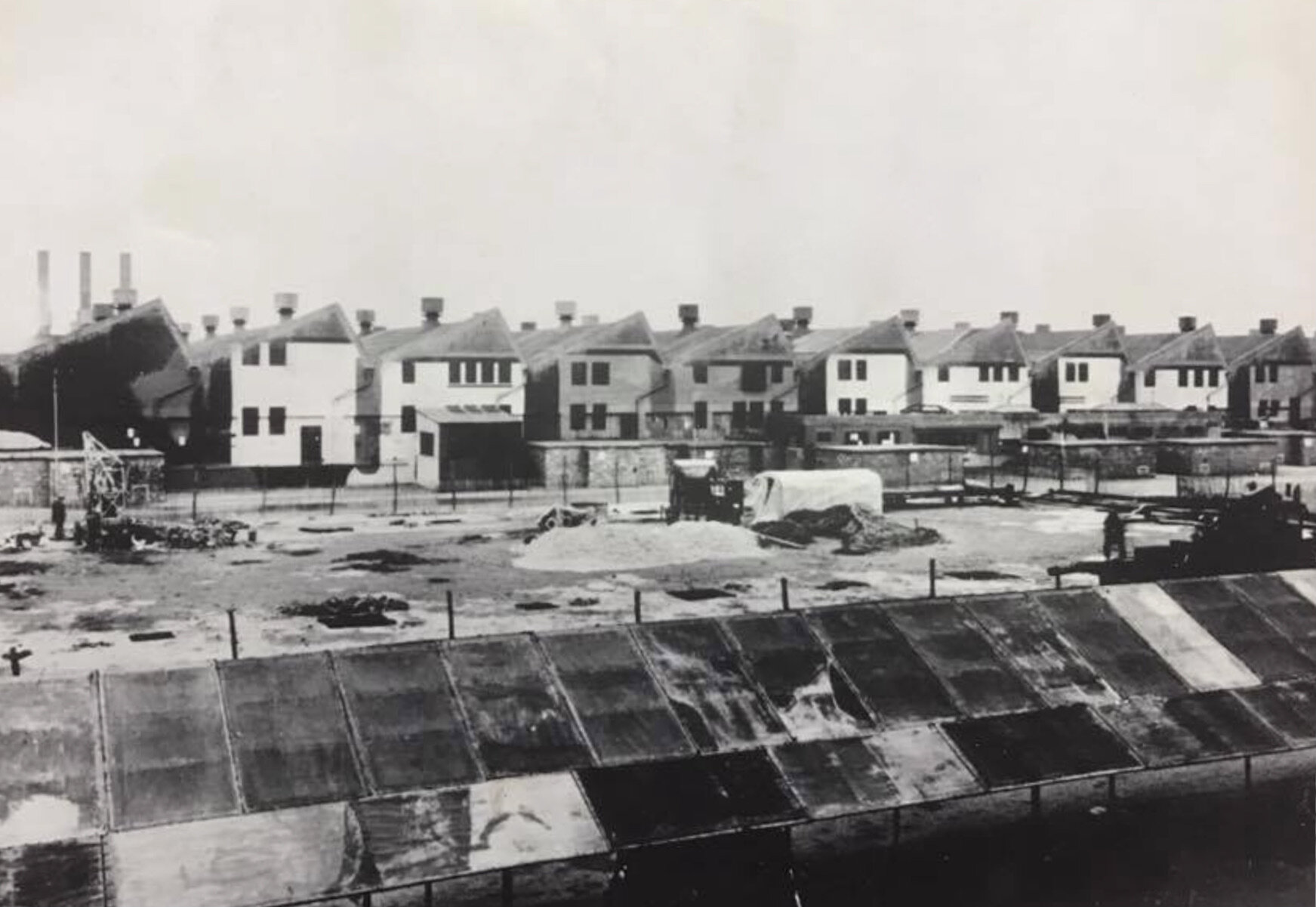
Virtual Museum
The Story Of The Pyms Lane Factory
In preparation for war, Rolls-Royce and the British Government searched for a location to construct a shadow factory to their one in Derby, to secure the continued production of aero-engines. Crewe with its excellent road and rail links, as well as being located away from the aerial bombing starting in mainland Europe, was a logical choice. In July 1938, construction of the factory started on a 24 hectare area on Merill’s farm potato fields, with the first Rolls-Royce Merlin engine rolling off the production line just five months later. During World War II the factory employed 10,000 people, the company having constructed houses on what became Selworthy Drive, Smith Grove and Rolls Avenue to house them. Most of these buildings are still used as family homes today.
In an attempt to protect the factory from Axis Power bombs, sections of the factory roof and external walls where painted to resemble streets and houses when viewed from the air. Unfortunately despite the camouflage at 15:09 on Sunday 29 December 1940 a German Junkers 88 bombed on the factory, killing sixteen workers outright with another casualty dying in hospital a few days later. A memorial in the shape of an Aeroplane propeller was later installed in the factory in memory of these workers.
A section of the factory under construction in 1938
An example of the house silhouettes that were painted on the factory.
With the war in Europe over and a general move towards the then new jet engine, Rolls- Royce concentrated its aero engine operations at their factory in Derby, moving motor car operations to Crewe where workers would be retrained in car production. This would include both the Rolls-Royce and Bentley brands, the company had previously acquired the Bentley Motor Company in 1931 where cars had been produced in Cricklewood, London before being moved to Derby. In 1946 the first motor car to roll off the production line was a Bentley Mark VI, between 1946 and 1952 the Crewe factory produced 5,208 Mark VI’s. It wasn’t until a year later in 1947 that the first Rolls-Royce rolled off the production line, the Silver Wraith would remain in production until 1958 with 1,883 vehicles being produced.
Car production continued steadily in Crewe with several expansions to the Pyms Lane factory over the next 30 years, quickly becoming one of Crewe’s largest employers. When the Rolls- Royce Motor Car division was sold to Vickers PLC in 1980, Bentley changed its image, they were designed to appeal typically to wealthy businessmen, whilst Rolls-Royce maintained their appeal to the traditionally wealthy. The result was a surge in Bentley sales, which by 1985 had overtaken Rolls-Royce sales. In 1998, Vickers PLC announced its intention to sell their car division, which included Bentley and the Pyms Lane factory, but not the Rolls-Royce name which had to be returned back to the Rolls-Royce company in the event of a sale. The Volkswagen Group was later revealed as the highest bidder beating BMW who had also submitted an offer.
An example of houses on Rolls Avenue that were constructed to house factory workers and their families.
The main admin building at the Pyms Lane factory.
However BMW did later purchase the Rolls-Royce brand, a handover plan was agreed with Volkswagen which would see the production Rolls-Royce badged cars ending in 2002, with BMW moving the production of Rolls-Royce to the historic Goodwood Estate in West Sussex. Following this Volkswagen began the expansion of the Bentley brand through a series of new models, the first Continental GT was the first car to be designed and produced solely by Bentley. In 2005 the company introduced the Continental Flying Spur but due to a lack of capacity at the Pyms Lane factory some Flying Spurs were built at Volkswagen’s Transparent Factory in Dresden, Germany, this ended in 2006 when all assembly work reverted to Crewe.
Bentley Motors celebrated their 100th anniversary on 10 July 2019.




